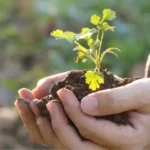Have you ever poured your heart into your garden, carefully selecting each plant and attempting to implement nutrient management practices and soil fertility while eagerly anticipating a flourishing harvest? I’ve been through it myself, and I get how frustrating it can be when things don’t turn out as expected. Seeing your plants wither, dealing with nutrient problems, and watching them struggle to grow can really get you down.
So, I’m here to share the lessons I’ve learned and the appropriate soil fertility management practices that helped me revitalize my garden. Join me as we uncover the secrets to reconditioning, rejuvenating, and replenishing your soil, ensuring our greens will continue flourishing.
Here are some suggested methods to revitalize and enhance soil fertility:
- Soil testing
- Increasing organic matter (compost, aged manure)
- Crop rotation
- Conservation tillage
- Water management
- Controlling plant debris
- Prevent soil erosion
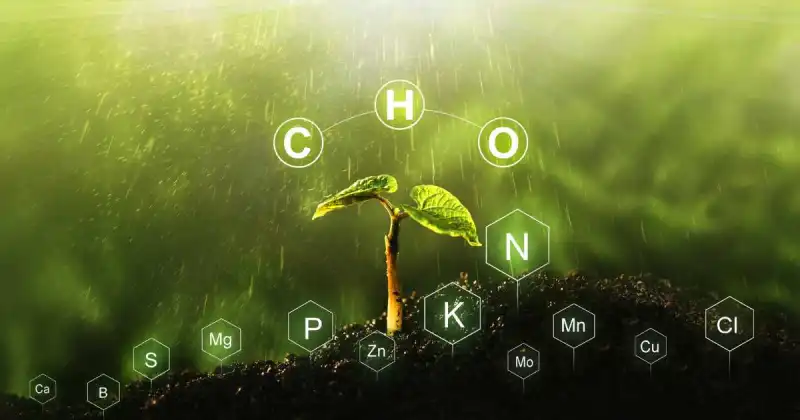
While there are many pathways and methods to creating your backyard garden paradise, in this article, we’ll dive deep into the world of soil fertility by uncovering the secrets that will supercharge the growth and vitality of your plants. From conducting various soil testing options to water management, I will equip you with the knowledge and techniques to create a nutrient-rich paradise in your backyard.
So grab your gloves and get ready to witness your greens thrive like never before. It’s time to turn your backyard into an extraordinary masterpiece of nature’s beauty!
Humble Highlights
- Save time by understanding why achieving excellent soil fertility starts with testing to unlock the secret to healthier plants and larger harvests.
- Seize control over your growing domain by discovering the tell-tale signs plants exhibit when there are nutrient deficiencies in your garden soil so you can grow crops faster and easier.
- Save money by discovering the most effective garden amendment to boost soil fertility into the stratosphere so you can naturally cultivate your veggies with mind-blowing results!
Soil Fertility: The Lifeblood Of Sustainable Agriculture
Soil fertility is the foundation for any successful and eco-friendly garden. Fertile soil contains the right stuff to help plants grow well, including nutrients, moisture, and physical support.
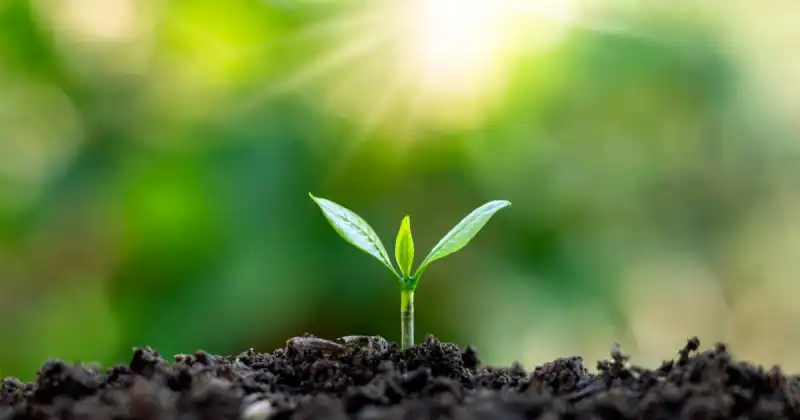
In sustainable agriculture, we want to meet today’s needs while also taking care of the environment for the future. That’s why soil fertility is so important. When the soil is fertile, nutrient availability of nitrogen, phosphorus, and potassium are present. These macronutrients are the life-giving food that helps plants grow strong, develop robust immune systems, and fight diseases.
Healthy soil fertility implies a soil with good structure, allowing plants to access air and water without being too compacted by soil particles. This structure also enhances the soil water-holding capacity, which reduces the need for frequent watering while saving you time and money. 1
Fertile soil is also rich in organic matter from decomposed plants and animals. Organic matter helps the soil’s structure while supporting the myriad of tiny living microorganisms that help plants grow.
Check Lowest Prices On The Best Garden Soil Books
First Step: Perform A Soil Test
Determining the fertility of your green space’s soil is paramount. The soil must be supported by research and seasoned growers alike. It is recommended to test soil chemical composition and the properties of your landscape.

Fortunately, you’ve got a few excellent options to consider when evaluating your soil analysis.
Three Different Testing Options
- Professional Test Kit: This is like the ‘smartphone’ of soil tests. It’s accurate and gives fast results, but it can be expensive. However, these professional test kits allow you to test for the three primary macronutrients: phosphorus, nitrogen, and potassium, and, depending on the test’s complexity, many micronutrients as well.
- Home Test Kit: This option is like your handy-dandy pocket calculator. It is inexpensive and provides a more generalized analysis of your soil’s nutrient content, but it is less accurate and detailed than the professional method above. Home test kits mainly check for nitrogen, phosphorus, and potassium (NPK) levels within your soil. 2
Check Lowest Prices On The Best Soil Testing Kits
- Professional Soil Testing Laboratories: This is the ‘supercomputer’ of soil analysis, providing precise nutrient values, including micro-nutrients like magnesium and calcium. However, you must expect a longer wait for results due to the detailed reporting. Some labs may also offer fertilizer recommendations based on soil and plant needs.
Soil Testing for Nutrient Management
With nutrient management, you conduct regular soil testing to assess nutrient levels and apply fertilizers based on the specific nutrient requirements of the grown crops. This process ensures your crops receive adequate nutrients without overloading the soil with excess fertilizers.
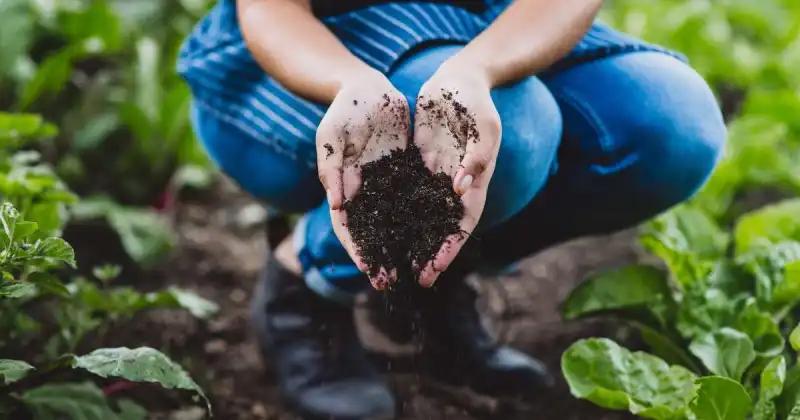
There are two primary nutrient management techniques, including:
- Adding Aged Manure
- Adjusting Soil pH
Let’s take a look at each in more detail.
Adding Aged Manure Increases Nitrogen And Phosphorus Content
Adding manure to your soil is an excellent way to increase nitrogen and phosphorus levels, two of the most essential nutrients for your greeneries. You can use aged manure from small farms or store-bought varieties.
Manure is especially beneficial for heavy-feeding, such as asparagus, broccoli, celery, corn, cucumbers, peppers, and tomatoes.
Check Lowest Prices On The Best Bagged Manure
Regarding the phosphorus in manure, about 90% of it is available for plants to use in the first year after applying, and the remaining 10% becomes available in the following years. A more practical approach to managing excess phosphorus when using manure is to rotate the fields where it is applied. This way, the phosphorus gets used efficiently in the following growing seasons, and you minimize the buildup in the soil over time. 3
Additionally, fresh manure contains high salt levels, pathogens, and weed seeds, which you won’t want to incorporate into your food garden. Instead, wait at least three to six months for manure to age before spreading it in your garden.
Moreover, manure is most effective when added to your homemade compost bin and applied in the fall after your last harvest to prevent loss of soil fertility.
Unfortunately, there is some confusion between manure and compost and how to use each effectively, especially with beginner gardeners. So, I’ve written an entire article on the safest ways to use manure and compost in the garden, along with the pros and cons of each.

Adjust Soil pH
Balancing the pH of your soil involves precise adjustments to create an optimal environment for plant growth. If your soil leans towards acidity and requires a shift towards alkalinity, lime is the suitable amendment to achieve this modification.
Check Lowest Prices On The Best Sources Of Garden Lime
Lime makes your soil less acidic and more fundamental, creating a setting where your plants can thrive, similar to giving them the perfect stage with plenty of sunlight. 4
On the flip side, if your soil is jamming too much on the alkaline side and needs a dash of acidity, sulfur helps lower soil pH, creating a more acidic environment.
Check Lowest Prices On The Best Sources Of Garden Sulfur
Green-Thumb Detective Work: Looking At Leaves For Deficiencies
An observant grower always supports a healthy garden. Although it’s super important to test your soil and understand what the subsequent results reveal, regularly inspecting your leafy foliage is equally essential.

However, be mindful that just because you see something off with the leaves doesn’t mean the actual plant is the problem. It’s like having a runny nose – it might be a cold, but it could also be allergies. The same applies to your green space. Here are some common leafy signs that may underlie more serious soil deficiencies. 5
- Yellow Leaves: Ever see the leaves turning a sickly yellow? Distressing, right!? It may signal that your soil is missing nitrogen, one of the main building blocks many plants require to grow well.
- Yellowing Between The Veins: Sometimes, you’ll notice the spaces between the leaf veins – those little highway-like lines on the leaf – turning yellowish while the veins stay green. This revelation likely indicates your soil lacks iron. 6
- Zinc Deficiency: This one’s a bit trickier to spot, but if you notice smaller leaves forming or slower-than-expected plant growth, it may indicate your soil needs more zinc.
- Herbicide Damage: Although it may take longer, I suggest manually plucking your weeds. For easier weed maintenance, wet your soil before pulling, and consider using organic fertilizer for better soil health.
Check Lowest Prices On The Best Manual Weed Tools
- Wet and Compacted Soil: Plants like their space and enjoy spreading their roots. If the soil becomes compacted from too much foot traffic or is constantly wet from an overhead clogged gutter, it can lead to poor vegetable growth.
- Trunk Girdling Roots: This happens when the roots start to wrap around the trunk or base of your plant, like a tightening and constricting belt. It’s detrimental to the overall health of your greens and will negatively impact the quality of your eventual harvest. 7
Improving your soil takes time, so declare you’ll have the commitment and patience to see things through. As you stick with it, you’ll see fuller, more abundant harvests annually.
Soil Amendments
Soil amendments are substances added to the soil to make it the best environment for your greens. Whether addressing soil acidity or enhancing soil preparation, these natural or artificial additions provide essential nutrients to your gardens.

While some amendments add soil volume or react with soil properties, others help upgrade soil quality, increasing crop yield when incorporated into your garden.
When selecting the proper amendments, consider factors such as your current types of soil conditions, the nutrient requirements of the plants, and the amendment’s compatibility with the intended crop system. It’s also important to consider the amendment’s availability, cost, and potential environmental impact on your surrounding crops and landscape. 8
Are you having trouble getting anything to take root and prosper in your garden because of the imbalances of native soil? Perhaps you’re struggling with the dense clay underfoot in your region? You’re not alone. Check out this article about how adding sand to your soil can get you growing while saving yourself a ton of time and hassle!
Add Organic Matter To Boost Plant Nutrients
Excellent sources of organic matter, such as compost and aged manure, provide invaluable benefits to the soil. These materials not only add essential nutrients to the ground but also enhance its structure, drainage, and moisture retention while promoting increased activity among soil organisms.
Improving your soil is an ever-evolving process. Although growers can enhance their soil fertility anytime, like applying coffee grounds to help boost plant growth, the most influential amendments are made after your last fall harvest, before winter arrives.
This instructional video below explains several popular ways on how you can give your soil a boost and get a leg up on next season’s crop. 9
Crop Rotation For Soil Cultivation & Productivity
Instead of growing the same crop in the same spot every year, you can switch to different crops in a planned and ordered sequence. This process is called crop rotation. This particular soil management principle promotes a fertile soil and structure that boosts yields and decreases disease and pests, to name a few of its many benefits.
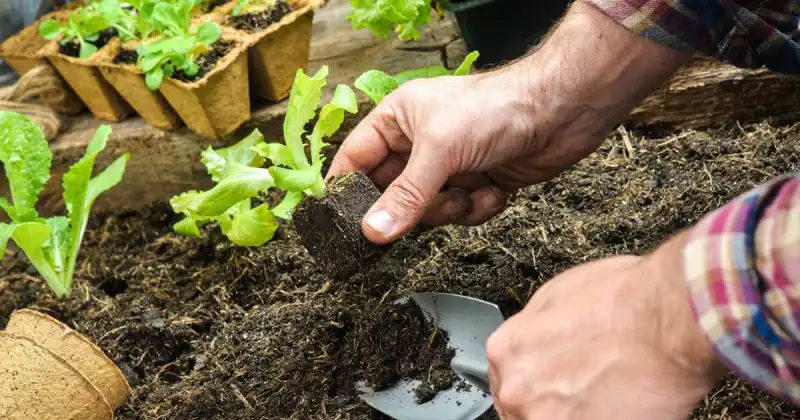
Crop rotation includes cash crops, like those grown for retail sale, and cover crops, which are cultivated to protect the integrity of the soil. In fact, cover crops like legumes can even add nitrogen to your ground, further improving its quality. 10
Check Lowest Prices On The Best Cover Crop Seed Mixes
Growing cover crops (also called green manures) like clover, vetch, or rye can add more nutrients to your growing area. These crops are typically grown off-season and then tilled into the soil come spring to add nutrients and organic matter for your first set of crops.
Mulching For Soil Fertility And Plant Growth
Materials like straw, wood chips, or leaves make excellent mulch options that can be placed atop the soil’s surface. Mulches help conserve moisture, regulate soil temperature, suppress weed growth, and gradually add organic matter as they decompose.
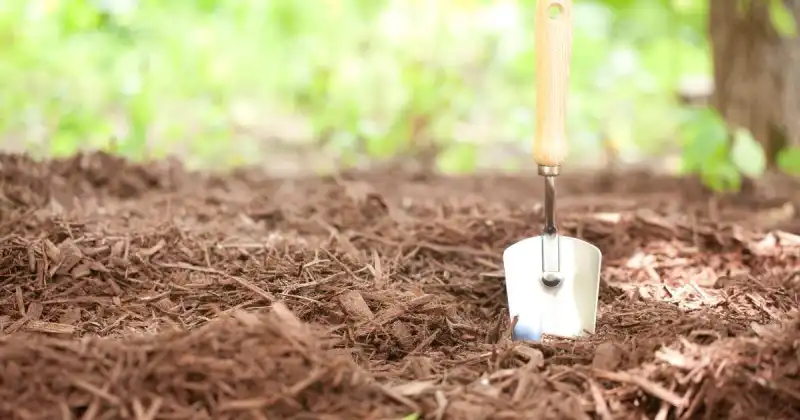
Water Management Strategies
Effective water management ensures plants get sufficient moisture without waterlogging. Proper irrigation prevents runoff and nutrient leaching. If your soil is heavy clay and has poor drainage, you can amend your soil before planting further with gypsum, sand, perlite, or compost to enhance drainage.
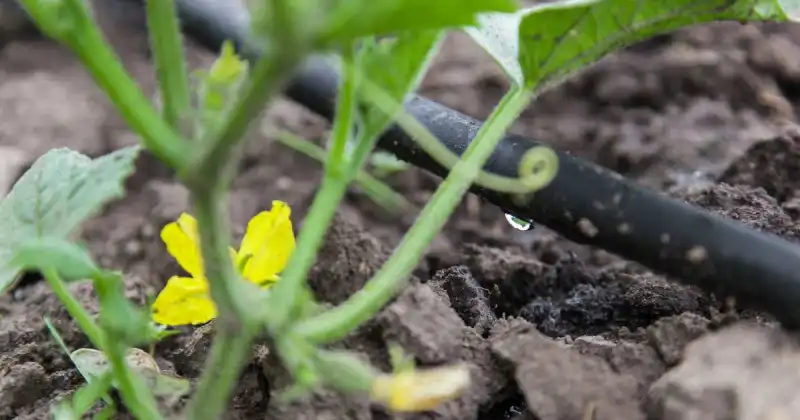
Good practice dictates that you check your soil’s water levels, especially during the rainy season. For example, consider digging a hole about 12 inches wide and 18 inches deep. Next, fill the void to the brim with water and continually check on the water level every 2 to 3 hours, noting how quickly the water level drops.
Check Lowest Prices On The Best Sources Of Gypsum
Understanding water flow and how proper drainage affects the health and vitality of your vegetable plants is crucial. That’s why I wrote a piece on how to make your soil drain better to save you time and money.
Remember, gardens with well-draining soil typically settle water about an inch per hour. If your water drains slower, perform a soil test to see what your soil requires and then begin amending.
To ensure efficient water use, follow good watering practices, such as:
- Timing. Water plants during cooler parts of the day, such as early morning or evening, to minimize evaporation loss and allow your foliage friends to absorb water more effectively.
- Watering depth. Apply water deeply to stimulate the development of deep roots. Rather than daily watering, hydrate your crops once or twice a week, allowing them to establish deeper roots and access moisture from lower soil levels. Adjust your watering habits based on your region, temperature, and climate, and act accordingly.
- Avoid overwatering. Overwatering can lead to waterlogging, nutrient leaching, and the development of root diseases among your crops. Use water only when necessary, and avoid excessive irrigation. 12
Check Lowest Prices On The Best Garden Hoses

- Mulching: Apply a layer of organic mulch around plants to conserve moisture in the soil, reduce weed growth, and regulate soil temperature. Mulching helps minimize water evaporation from the soil surface and keeps the ground moist. In fact, I wrote this informative article about how mulching your garden with straw is an undervalued tool most growers need to be made aware of and how this practice can save you money.
- Irrigation system selection: Prepare and choose the appropriate irrigation system based on the specific needs of your vegetables, soil type, and climate. Options include drip irrigation, sprinklers, or soaker hoses, each with advantages and efficiency.
- Monitor moisture: Regularly check the moisture levels of your soil to determine when watering is needed. This process can be done using a moisture meter or simply by checking the soil’s appearance and feeling it with your hands.
Check Lowest Prices On The Best Drip Irrigation Kits
Backyard Composting: Organic Matter As Fertilizer
Composting is a natural process of decomposing organic materials, such as food scraps, yard waste, and plant residues, into a nutrient-rich material called humus when finished. It is a controlled process mimicking the natural decomposition in forests and other natural environments.

Compost is rich in organic matter, which helps enhance soil moisture retention, promotes aeration, and supports the growth of beneficial soil microbes. It acts as a sponge, holding water and nutrients for plants to access over time.
Check Lowest Prices On The Best Composting Books
Imagine having a little composting station right in your backyard. It’s a great way to recycle organic materials and create something unique to promote thriving vegetable crops for years. All you need to do is gather things like fruit and veggie scraps, yard waste, and leftover parts, then layer them in your compost pile or bin.
Over time, thanks to the work of tiny organisms, these materials break down and turn into nutrient-rich compost (humus), often called “black gold,” to seasoned growers. This beneficial backyard practice helps reduce household waste by lessening landfill waste and saves you lots of money on fertilizers. 13
Because many backyard green-thumbs are always thinking about next year and how they can prepare their garden soil now for larger, more abundant harvests, check out this done-for-you article I wrote on exactly how you can leverage your garden and gain a leg up towards your future success.
Check Lowest Prices On The Best Compost Tumblers
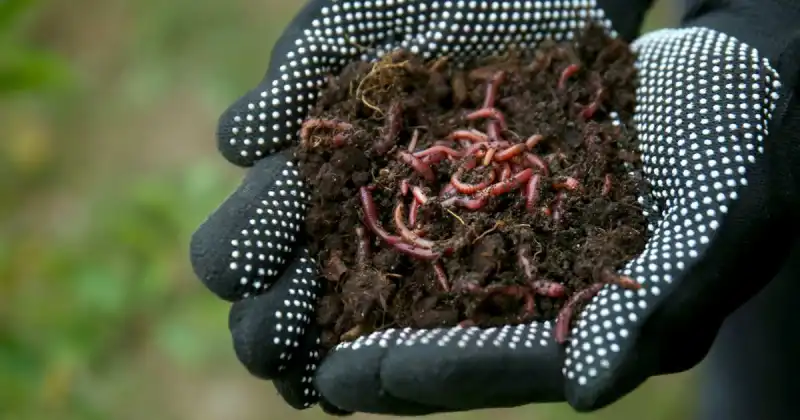
Vermicomposting
Vermicomposting is like having your very own army of tiny helpers. This method involves using special red worms to munch on your organic waste. These slimy yet hard-working critters amend your soil by devouring the soil’s organic matter. What comes out the other end is a valuable compost material called worm castings that your plants enjoy. 14
Check Lowest Prices On The Best Worm Castings
Industrial Or Large-Scale Composting
Industrial or large-scale composting is typically done by big organizations like cities or businesses that handle large amounts of organic waste, including materials obtained from the soil. They carefully break down food scraps, yard trimmings, and leftover materials.
The goal is to turn all this waste into valuable compost, a soil organic matter that can be used for various things. It’s like giving a second life to all that organic stuff and making something useful out of it.

List Of Composting Benefits:
- Nutrient Enrichment: As organic matter decomposes during composting, it releases nitrogen, phosphorus, potassium, and various micronutrients, which your crops can use to grow larger harvests.
- Balances Soil: Compost helps balance acidic or alkaline soils, bringing them closer to an optimal pH range for plant growth. Of course, just like soil testing mentioned above, it’s recommended to carefully monitor your soil’s pH to keep it within an optimal range.
- Improved Soil Structure: Compost helps to enhance structure by creating gaps within the soil, allowing for better water infiltration, root penetration, and air circulation, which support strong root development without the need for commercial fertilizer.
- Water Retention And Erosion Control: Compost acts like a sponge, aiding moisture retention within the soil and diminishing water runoff. This process, in turn, contributes to erosion prevention by enhancing the stability and structure of the soil.
- Soil Health: Incorporating compost into your green space encourages beneficial soil microorganisms to thrive while providing an abundant food source available in the soil, including earthworms, bacteria, fungi, and other microorganisms. These organisms contribute to nutrient cycling, disease suppression, and soil health, all based on soil conditions.
In spring, you’ll want to provide compost ample time to decompose and offer nutrients to your garden soil so your crops get off to a fast and strong start. In the fall, laying a few inches of compost helps provide soil structure and is a viable food source for microorganisms over winter.
Crop Residue (Debris) Garden Management
Proper crop residue management by leaving debris (sticks, leaves, spoiled vegetables) on the field or incorporating them into the soil after harvest contributes to long-term soil fertility. This practice helps enrich the soil with organic matter, recycles nutrients, boosts soil moisture retention, and supports beneficial microbial activity, creating a fertile environment that promotes healthy plant growth and crop productivity.

However, as crop residue or debris may be suitable for your compost pile, it can also become a breeding ground for fungus, which, if left unchecked, can spread throughout your crops and limit your bountiful yields. Fortunately, I’ve written an entire article on how to treat fungal spreads in your garden so you’ll know how to care for your green friends.
Conservation Tillage
When soil is excessively tilled, nutrients can be exposed to oxidation, leaching, or runoff, reducing plant health, vitality, and availability. Reducing or eliminating tillage practices minimizes soil disturbance and erosion and helps retain organic matter to improve soil structure, moisture, and nutrient preservation. These advantages contribute to maintaining productive and fertile soils for long-term crop production.
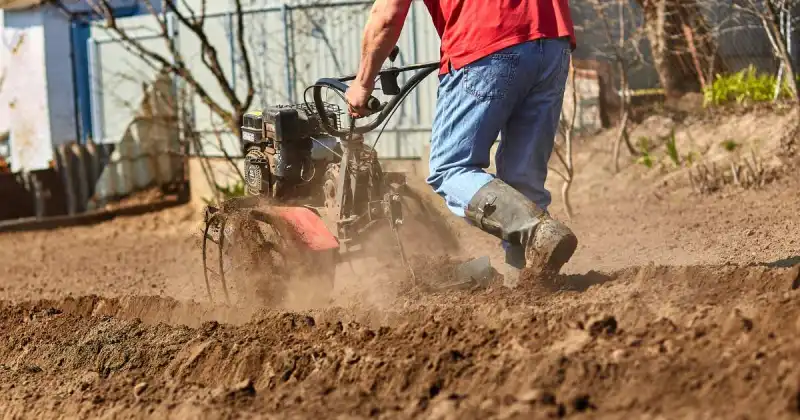
When it comes to gardening, having rich, fertile soil is paramount. If you don’t have nutrient-rich soil, you’re leaving fruit on the vine. Check out my article on achieving the best garden topsoil and why topsoil itself isn’t enough to grow crops abundantly and consistently in your backyard.
Erosion Control Method To Retain Fertile Soil
When erosion occurs, the topsoil is carried away by water or wind. Underlying erosion control practices, such as contour plowing, cover cropping, terracing, or creating windbreaks, soil movement is reduced or halted.

Winter is an ideal time for erosion to occur. Whether through wind, frost, or general disruptions by wildlife, this idle time contributes to reduced soil fertility and vegetable yields come spring. Be sure to read the article I wrote about how you can quickly improve your soil over winter with these surefire methods.
Adopting these techniques helps retain the nutrient-rich topsoil, ensuring that essential nutrients remain available for plant root uptake and supporting soil fertility.
A Quick Recap To Maintain Soil Fertility

- Soil Test: Conduct regular soil testing to assess soil and pH nutrient levels, enabling targeted fertilization and soil amendments as you progress through each growing season.
- Add Organic Matter: Adding organic matter to the soil, such as compost, aged manure, and coffee grounds, helps boost nutrient content and soil structure. Even adding eggshells to your garden helps promote sustainable gardening practices.
- Crop Rotation: Implement crop rotation to balance nutrient uptake and reduce pest and disease risks that come from the soil.
- Conservation Tillage: Adopt a simple conservation tillage practice to help minimize soil disturbance and erosion while helping your green space retain organic matter.
- Manage Moisture: Manage water effectively through proper irrigation techniques to avoid water logging or drought stress. Drip irrigation, sprinklers, and soaker hoses all make excellent options.
- Erosion Control: Protect against nutrient loss and erosion through erosion control measures like contour plowing, windbreaks, and growing cover crops over winter. 15
- Practice Effective Soil Care: Maintaining your soil includes weed control, providing your crops with proper drainage, and cultivating cover crops.
Benefits In Soil Fertility Management
There are several primary benefits that soil provides when maintaining its fertility, including:
- Supercharged harvests: Because soil remains fertile, it helps maximize crop productivity and yield, supporting independent food production in your backyard.
- Encourages vigorous plant growth: By promoting long-lasting soil health, you’ll have happier crops with robust immune systems that can ward off harmful pests and diseases.
- Eco-friendly: By sustaining fertility, you’ll conserve natural resources by reducing the need for synthetic fertilizers and minimizing nutrient runoff into water bodies. As a humble gardener, you’ll also advance environmental stewardship by reducing soil erosion and protecting ecosystems.

Conclusion
Once you have the analysis, some of the most practical and popular options for gardeners include increasing organic matter within your soil, rotating your crops, limiting tilling practices, effective water management, incorporating plant debris within your soil, and lessening the devastating effects of erosion.
Taking care of soil fertility is vital for the success of your green space and the health of our planet. Remember, like anything in the garden, soil amendments are not a one-time fix but an exciting ongoing journey that rewards you with bountiful harvests, eco-friendly practices, and a greener planet.
One of the best practices for soil improvement is to perform a soil test to obtain results that provide a baseline analysis of your soil type and its current nutrient levels (or deficiencies).
So, let’s roll up our sleeves, dig deep into the wonders of soil fertility, and let our green paradise become the vibrant, sustainable havens we’ve always dreamed of!
What methods do you use to advance soil fertility in your green space? Let us know by dropping a line in the comment section below.
SOURCES
- Frontiers – Restoring Soil Fertility On Degraded Lands To Meet Food, Fuel, And Climate Security Needs Via Perennialization
- University Of Illinois Urbana – Champaign, Extension – Soil Testing
- MDPI – Assessment Of Manure Compost Used As Soil Amendment – A Review
- The University Of Maine, Cooperative Extension – Soil And Plant Nutrition: A Gardener’s Perspective
- North Carolina State University, Extension – A Gardener’s Guide To Soil Testing
- University Of California Agriculture And Natural Resources – Nutrient Deficiencies
- University Of Maryland, Extension – Girdling Roots
- UC Davis Global Soil Health Portal – Nutrient Management
- Penn State University – Soil Management In Home Gardens And Landscapes
- EOS Data Analytics – Crop Rotation: A Way To Boost Your Yields
- University Of Minnesota, Extension – Living Soil, Healthy Garden
- University Of Minnesota, Extension – Soil Health And Water Quality: How Are They Connected?
- North Carolina State University, Cooperative Extension – How To Improve Soil With Compost And Cover Crops
- Wikipedia – Vermicompost
- The University Of Rhode Island – Reduce Soil Erosion




